
%20(8).jpg)
Prenatal yoga is one of the safest ways to move during pregnancy. It helps you stay active, reduce common discomforts, and prepare both your body and mind for childbirth. Whether you’re wondering when to start prenatal yoga or which poses are safe for each trimester, this complete guide will walk you through every step so that you can practice confidently and safely at your own pace.
Continue reading to explore prenatal yoga’s benefits, safe poses to do, and the ones to avoid, along with essential safety tips for each trimester.
Prenatal yoga is a gentle, safe form of yoga designed specifically for pregnancy. It combines adapted yoga poses, breathing techniques, and guided relaxation to support your changing body and prepare you for childbirth. Each movement is tailored to protect your joints and strengthen essential muscles, especially the hips, back, and pelvic floor.
Beyond physical strength, the benefits of prenatal yoga extend to your emotional well-being. Through mindful breathing and gentle stretches, it helps calm your mind, ease anxiety, improve sleep, and foster a deeper connection with your baby.
Unlike traditional yoga, prenatal yoga focuses on safety and comfort at every stage. It encourages you to slow down, listen to your body, and move in ways that feel supportive and nourishing throughout each trimester.
Prenatal yoga is typically slower-paced, emphasizing comfort, safety, and self-awareness over intensity. Many classes also use props such as bolsters, pillows, or blankets to make each pose accessible.
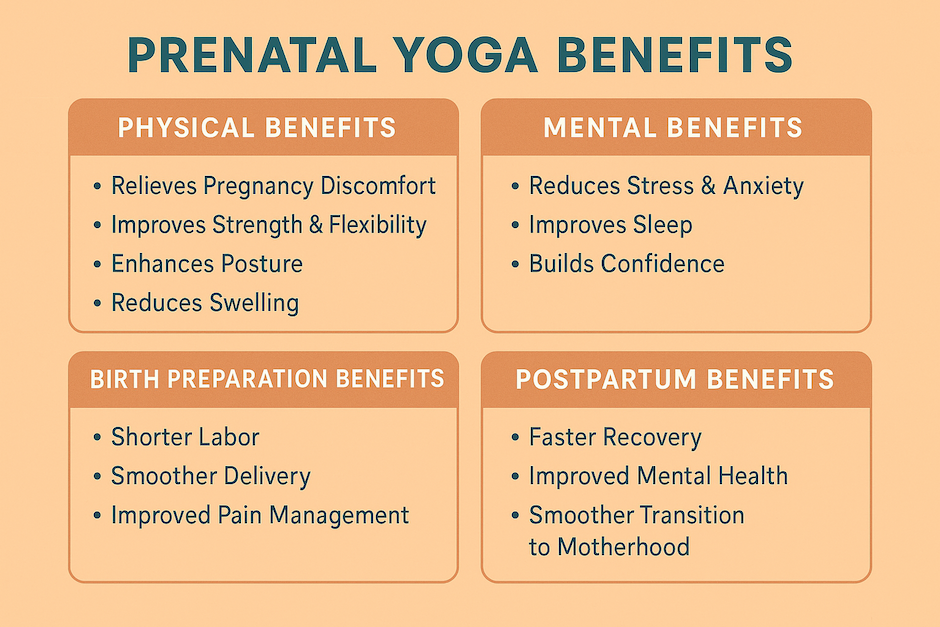
[inline-CTA-1]
Prenatal yoga offers far more than just gentle stretching. It’s a holistic practice that nurtures your body, mind, and emotions through every stage of pregnancy.
Physical Benefits
Learn more about Postpartum Yoga in this detailed article!
Prenatal yoga can be safely practiced at home with minimal equipment — just a mat, a few pillows, and an open heart.
These poses are gentle, supportive, and suitable for most stages of pregnancy when practiced with awareness and care.
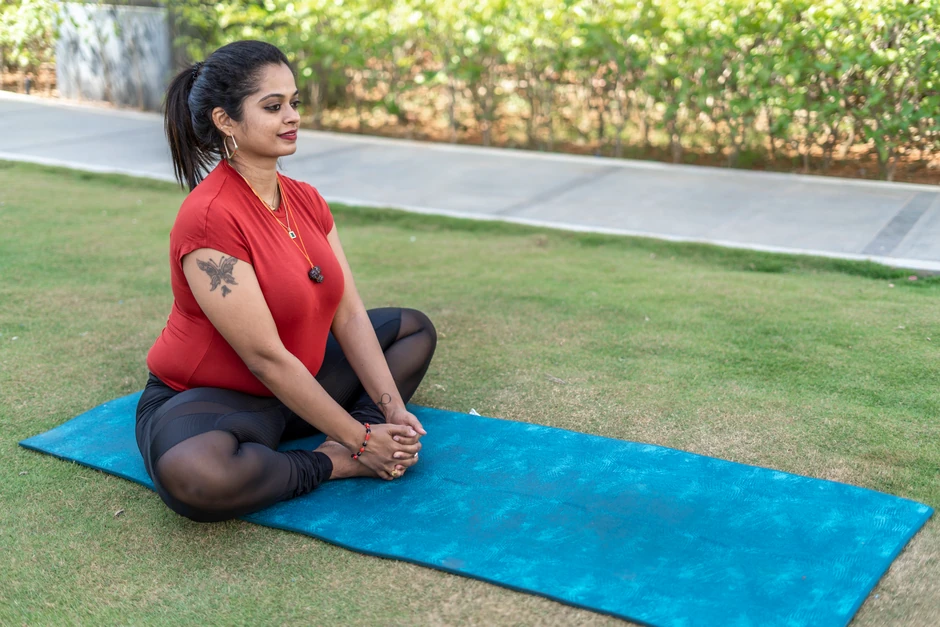
Opens the hips and pelvis, improves circulation, and relieves lower back tension.
How to do it:
Modification: Sit on a folded blanket or bolster to lift your hips.
Best for: All trimesters.
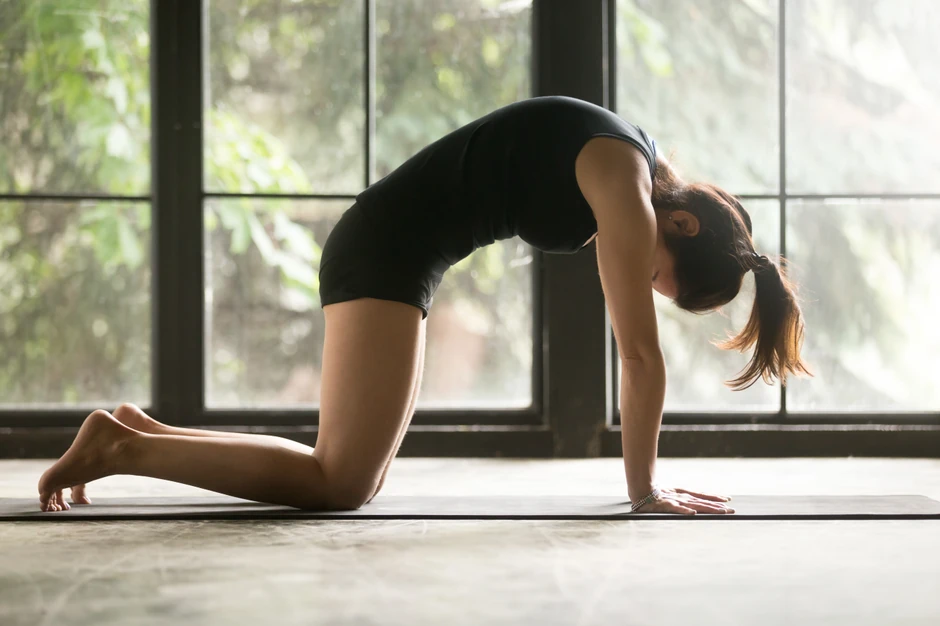
Relieves back pain, improves spinal flexibility, and encourages optimal baby positioning.
Modification: Keep movements slow and controlled; avoid compressing the belly.
Best for: All trimesters.
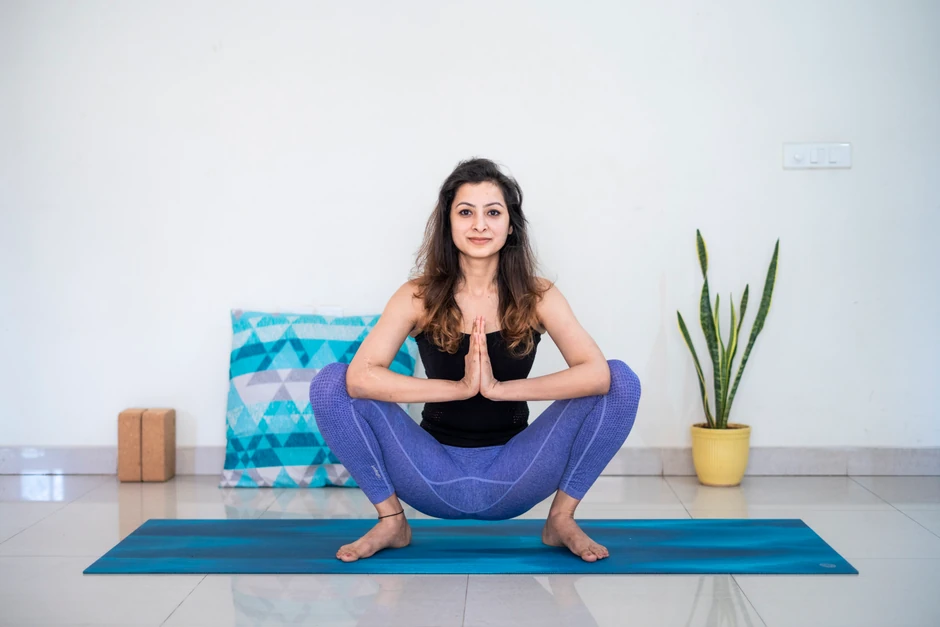
Opens hips and pelvis, strengthens legs, and prepares for birthing positions.
Modification: Sit on yoga blocks or a rolled blanket if heels lift.
Best for: Second and third trimesters.
_optimized.webp)
Calms the nervous system and relieves lower back and hip tension.
Modification: Use multiple pillows for support.
Best for: All trimesters.
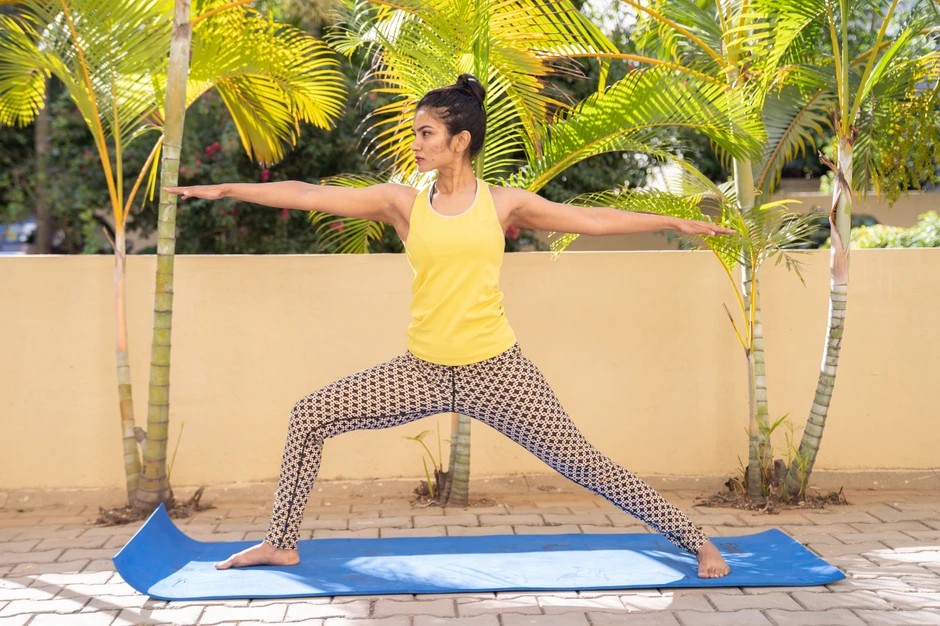
Builds strength and endurance in the legs while improving balance and hip flexibility.
Modification: Use a wall for balance or reduce the depth of the bend.
Best for: First and second trimesters.
Promotes relaxation, reduces back strain, and improves circulation.
Best for: Second and third trimesters (avoid lying flat on your back).
Strengthens the lower back and core, and helps relieve back pain.
Modification: Perform standing against a wall if wrist pressure is uncomfortable.
Best for: All trimesters.
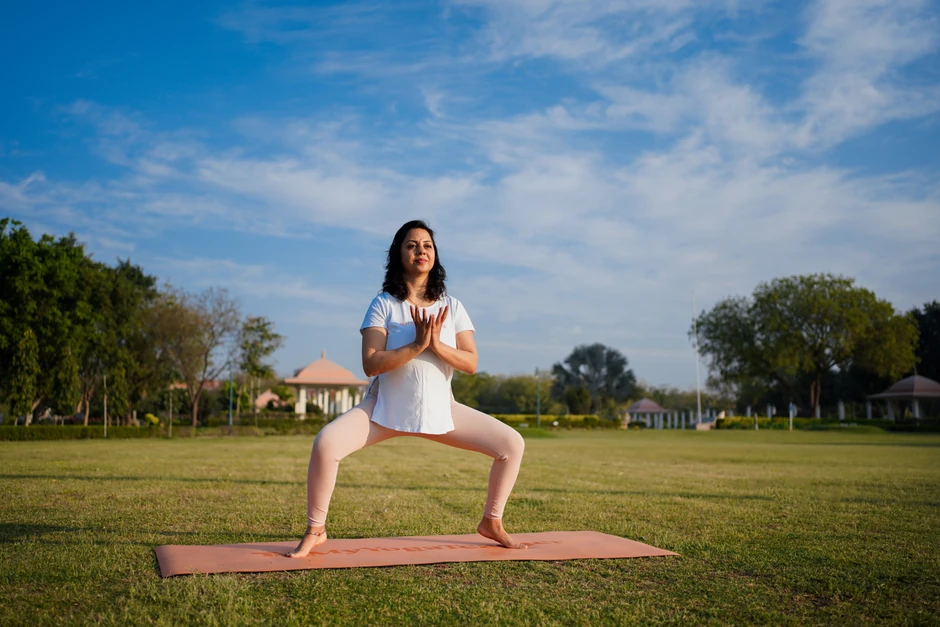
Opens hips and inner thighs while strengthening the pelvic floor and legs.
Modification: Hold a chair or wall for balance.
Best for: First and second trimesters.
.webp)
Eases lower back tension and opens the chest.
Modification: Only practice this until 20 weeks; after that, replace with side-lying relaxation.
Best for: First trimester and early second trimester.
Expands the rib cage, improves breathing space, and relieves tension in the sides of the body.
Modification: Use a cushion under your hips for better alignment.
Best for: All trimesters.
If you’re newly pregnant, you might be wondering: When is it safe to start prenatal yoga?
For most women, the second trimester (around weeks 13–14) is the ideal time to begin. By then, your body has typically adjusted to early pregnancy changes, energy levels begin to rise again, and the risks are lower.
That said, every pregnancy is unique. Always consult your healthcare provider before starting any new exercise routine, especially if you’re new to yoga or have a high-risk pregnancy.
Below is a trimester-wise guide to help you practice prenatal yoga safely and effectively:
Your body is working hard to create new life, and fatigue, nausea, and hormonal shifts are common.
If you’re new to yoga, it’s best to wait until the second trimester to begin.
If you’ve practiced before, you can continue gentle movement with modifications.
Focus on:
Avoid:
This is often considered the sweet spot for starting prenatal yoga.
Your body feels more balanced, and your growing belly is still small enough to move comfortably.
Focus on:
Why it’s ideal: You’ll have more energy, less morning sickness, and better body awareness to explore new postures safely.
As your belly grows and your center of gravity shifts, comfort and safety take priority.
Focus on:
Avoid:
Avoid or modify prenatal yoga if you have:
Even though yoga is one of the safest ways to move during pregnancy, certain poses can put unnecessary pressure on your belly, joints, or blood flow. Knowing what to avoid helps you practice with confidence and peace of mind:

Avoid:
Why: These poses overstretch abdominal muscles and can cause diastasis recti (abdominal separation).
Safer Alternatives: Supported Bridge Pose or gentle chest-opening with a bolster.
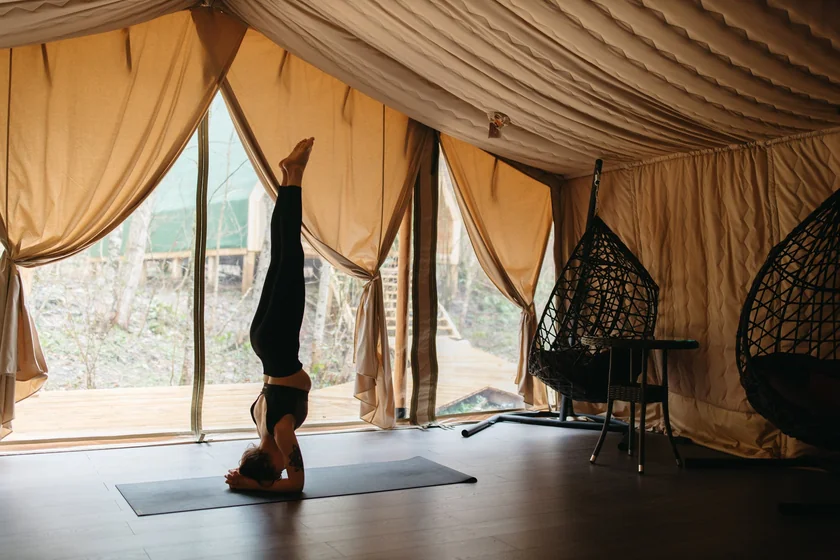
Avoid:
Why: Inversions increase the risk of falls and dizziness due to shifting balance and blood pressure changes.
Safer Alternative: Legs-up-the-wall variation (with hips elevated on pillows) in early pregnancy only, or gentle seated forward folds later on.
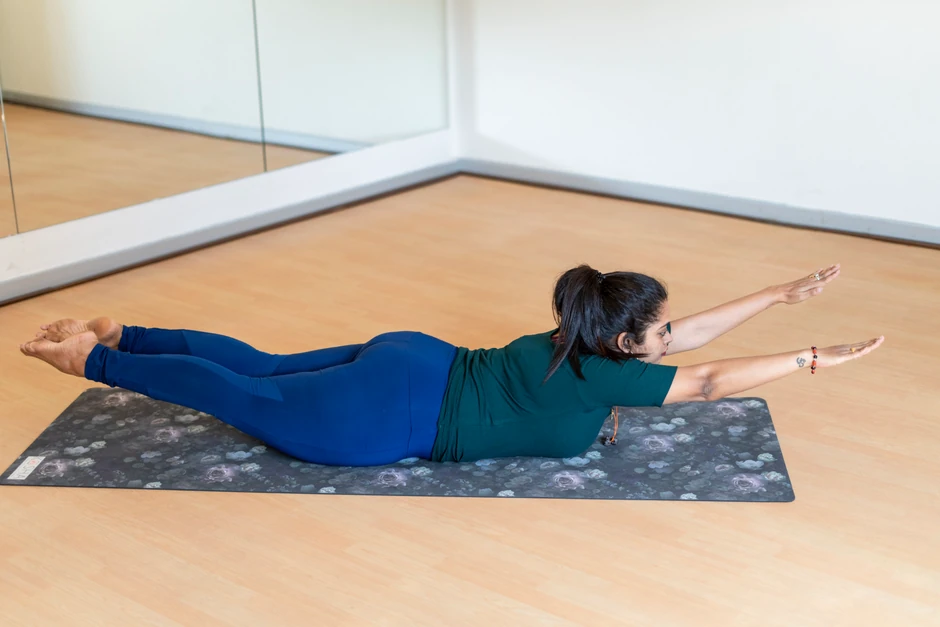
Avoid:
Why: Lying on your stomach compresses your uterus and can restrict blood flow to the baby.
Safer Alternative: Cat–Cow Pose or modified Child’s Pose with knees wide apart.
Avoid:
Why: Twisting deeply compresses the abdomen and can overstretch ligaments softened by pregnancy hormones.
Safer Alternative: Gentle open twists — twisting from the upper back and shoulders only, keeping your belly facing forward.
Avoid:
Why: Pregnancy raises your internal temperature naturally — overheating can cause dehydration and stress for your baby.
Safer Alternative: Practice in a cool, well-ventilated space, and hydrate often.
Avoid:
Why: This position can compress the vena cava — the main vein carrying blood to your heart — leading to dizziness or reduced circulation.
Safer Alternative: Side-Lying Savasana on your left side with pillows for support.
Avoid:
Why: These strain the abdominal wall and increase the risk of falls as balance shifts.
Safer Alternative: Gentle Pelvic Tilts, Standing Cat-Cow, or Supported Goddess Pose near a wall.
Avoid:
Why: The hormone relaxin loosens your joints — overstretching can cause instability or injury.
Safer Alternative: Bound Angle Pose or Supported Butterfly Stretch with pillows under your knees.
Practicing prenatal yoga at home can be deeply comforting. It allows you to move at your own pace, rest when needed, and tune in to your body without pressure or comparison. With a few simple props and mindful awareness, you can create a safe, nurturing space right at home.
Having a few supportive items can make your prenatal yoga practice safer and more comfortable:
Stop immediately and consult your doctor if you experience:
For maximum safety and effectiveness, practice safely and confidently with a certified prenatal yoga teacher.
[inline-CTA-2]
Yes! When practiced with proper modifications and guidance, prenatal yoga is considered one of the safest forms of exercise during pregnancy.
However, always check with your healthcare provider first, especially if you have a high-risk pregnancy or any medical concerns. Choose classes or online sessions led by certified prenatal yoga instructors.
Absolutely! Gentle yoga can be practiced daily as long as it feels comfortable.
Aim for 3–4 sessions a week of 20–30 minutes, and include rest days when you need them. Even 10 minutes of stretching and deep breathing can make a difference.
Avoid deep backbends, inversions, lying on your belly, and deep twists. After 20 weeks, skip lying flat on your back.
These positions can restrict blood flow or strain your joints. Always opt for gentle, open, and supported variations instead.
Prenatal yoga modifies traditional poses to make them safe for pregnancy. It focuses on breathing, balance, pelvic floor strength, and relaxation — not flexibility or intensity.
Yes! Studies suggest that prenatal yoga can improve pain management, reduce anxiety, and even shorten labor duration.
By learning to connect breath with movement, you prepare your body and mind to stay calm and strong during childbirth.
Definitely! In fact, many of the benefits of prenatal yoga carry beautifully into postpartum recovery.
After your doctor gives clearance (usually around 6 weeks postpartum), you can begin gentle yoga to rebuild strength, improve posture, and reduce stress.

Receive personalized guidance tailored to your unique fitness goals, live with a dedicated coach—no credit card required.